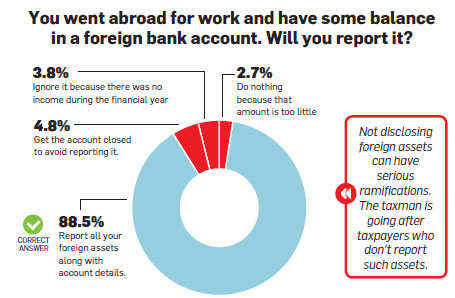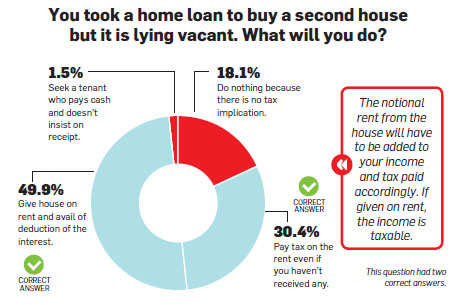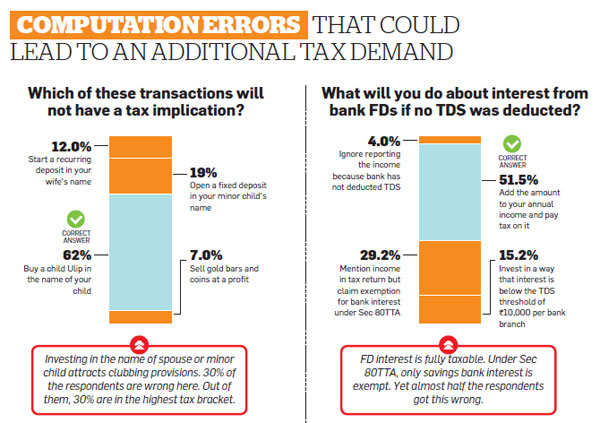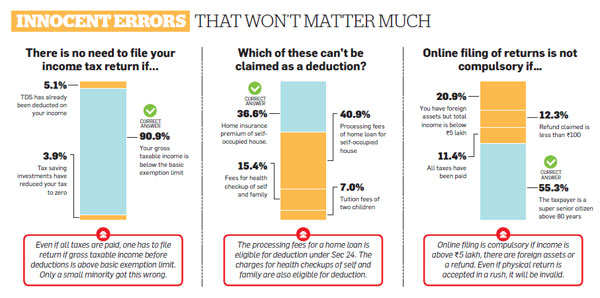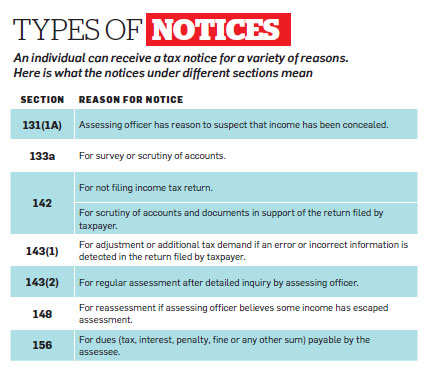50 Tips For Better Miles Per Gallon
Photographers: Courtsey of Advanced FlowBorlaJustice Brothers
Yeah, yeah. Gas costs a lot, the price of oil is atrecord highs...just like in the '70s. But it's not like you've responded by dumping your 4x4 to advertise hybrids to the neighborhood. Those guys are the weenies; it's much more macho to deal with the pain and torture of filling up dual tanks. Don't we know it-we certainly haven't responded to the high price tag by selling any of our gas-guzzling rigs for more economical junk. But we have decided to try and overcompensate in ways proven to improve fuel economy. Some are more challenging to do than others (walk somewhere?!), but all will keep extra pennies in your pocket. But do remember that the additional weight from the pennies will decrease fuel economy.
* Automatic versus manual transmission? Nowadays, automatics are becoming increasingly better than you are at shifting at the most opportune moment. In some new cars, the automatics are actually getting better mileage than the stick version. But manual trannies are still lighter in weight and commonly have more gear choices-plus rowing your own gears adds to performance satisfaction. For now, we'd still go manual for fun and to have the edge on fuel economy.
* The more torquey the engine, the easier it is for the truck to get up to speed without effort. When the engine doesn't have to work hard, you win. That's why a diesel can get better gas mileage than a gas engine-up to 30 percent.
* Don't have guilt about buying a Hemi. It now comes with the Multi-Displacement System (MDS), which shuts off cylinders when the power isn't needed (making it a four-banger!), then behaves like a V-8 when you need the extra get up and go.
* If you do need the A/C, heater, or defroster, set it on a low fan speed. If you have rear air and no one is sitting back there, then why is it on?
* A continuously variable transmission doesn't hunt absentmindedly for gears like it sounds. In a way, it has unlimited gears, making it efficient technology, so consider that option if your new-vehicle choice has it.
* Replace the fuel filter if it's getting clogged. Less gas will be able to flow to the engine; you'll ride the accelerator more, and believe it or not, it'll still take more fuel to help the engine compensate.
* If you drive with your windows down at high speeds, it increases drag, which decreases fuel economy.
* A bad O2 sensor can reduce fuel economy a whopping 40 percent. In fact, if the Check Engine light comes on, don't ignore that.
* Avoid traffic. Unlike a hybrid, stopping and going burns gas.
* Just because cheap gas makes your wallet happy, it might not make your truck happy. If the gas doesn't have the right amount of octane and some other big-word ingredients, detonation could result. Also, additives that prevent the bad deposits might be absent, which could clog the fuel injectors-which hurts fuel economy. If you fill up and your truck starts running crappy, don't buy gas from there again.
* Keep up with oil changes, because if your oil gets dirty, it gets thicker, and we already covered what happens with thick oil. And change the oil filter too. Routine maintenance (read: tune-ups, including checking tranny fluid) is important for mpg.
* Pull off the carb and put in fuel injection. Fuel injection is more efficient and can get better fuel economy than a carb. The cost of doing this will take forever to make economic sense, so use it as an excuse to get fuel injection for better wheeling experiences.
* If the wheels/tires are out of alignment, more drag is created and it'll take extra energy to keep the truck going straight down the road. Plus, the tires will wear out sooner.
* Is your thermostat functioning the way it should? Cold engines gulp fuel.
* Why are you using premium gas? Unless you've done significant engine mods, 87 octane is fine.
* Swapping out the stock engine-driven fan and fan shroud for an electric fan (such as one from Flex-a-lite, www.flex-a-lite.com) is designed to keep the engine cooler as well as get rid of the drag from the stock fan, which in turn can bump up the mileage.
* Adding Overdrive to the transmission will lower the engine rpm to help keep it in peak range. You can get a kit from Advance Adapters (www.advanceadapters.com), such as the Ranger Torque Splitter Two-Speed Overdrive for the manual trans, which adds a gear between each gear already in the transmission, essentially turning your four-speed into an eight-speed. It's one of the priciest fuel-economy fixes, but the Overdrive kit will also help with towing and offer more gear choices off road. Also, higher gears and lower speeds equals an engine turning slower. Less gas is needed to do that.
* Add a performance (calibration) chip that can reprogram your vehicle's computer, adjusting ignition timing and the air/fuel mix for performance that's suited to your driving style, whether a power programmer or control module. (Try BD Power, www.bdpower.com or JET, www.jetchip.com.) There should be an increase in both hp and gas mileage, among other benefits. Consider it if you tow.
* Keep the tires at the recommended air pressure. You can reduce fuel economy by 3.3 percent if you don't.
* An exhaust system or headers (such as from Borla, www.borla.com) can improve performance, because when air runs into resistance, it can build backpressure. You don't necessarily need the biggest tailpipe, though.
* Airdams, spoilers, and tonneaus provide better airflow, less drag. The smoother the body of the vehicle, the better the mileage.
* If your wheeling is seasonal, consider taking off the big rubber for something more street friendly until you're ready to hit the trail again.
* Drive someone else's vehicle. Or if they figure out your master plan, maybe sign up for a co-op (check out www.zipcar.com); gas and insurance is paid for.
* Make sure your camper or bedcap is level with the top of the cab. It's aerodynamics again.
* Burnt fuel leaves behind all sorts of garbage that can get stuck in the combustion chambers and valves. Using an additive (like Justice Brother's Fuel Injection System Cleaner, www.justicebrothers.com) can be poured into the tank to help remove carbon and other deposits. To slow the burn rate of combustion, there are also octane boosters.
* If you bolted in a larger axle, don't worry about any additional weight from that. Think more about the tire size and final gear ratio combo. Get technical support about choosing the right gearing if you're not sure (such as from Reider Racing, www.reiderracing.com).
* Don't speed. Every 5 mph over 60 mph can cost up to $0.21 more per gallon.
* Aluminum wheels are lighter than steel wheels, and every pound of weight added decreases fuel economy.
* Go ahead, buy that hybrid-we won't mock you. Much. A hybrid gets its ideal fuel economy in stop-and-go traffic, not the highway (because it shuts the engine off and runs on the battery at a stop). But if you start modifying a hybrid with beefy tires and so on to seem less dorky, it starts defeating the purpose of buying a hybrid: fuel economy. And it could void the warranty, depending on what you do.
* Go ahead, buy that econobox-we won't mock you. Actually, we will. But it might be cost-effective to use that as the daily driver and save your 4x4 for weekend excursions.* Automatic versus manual transmission? Nowadays, automatics are becoming increasingly better than you are at shifting at the most opportune moment. In some new cars, the automatics are actually getting better mileage than the stick version. But manual trannies are still lighter in weight and commonly have more gear choices-plus rowing your own gears adds to performance satisfaction. For now, we'd still go manual for fun and to have the edge on fuel economy.
* The more torquey the engine, the easier it is for the truck to get up to speed without effort. When the engine doesn't have to work hard, you win. That's why a diesel can get better gas mileage than a gas engine-up to 30 percent.
* Don't have guilt about buying a Hemi. It now comes with the Multi-Displacement System (MDS), which shuts off cylinders when the power isn't needed (making it a four-banger!), then behaves like a V-8 when you need the extra get up and go.
* Don't increase your speed to get up a grade. You'll get better fuel economy by maintaining the speed. Do what it takes to climb a hill off road, but the thought remains the same.
* When an air filter gets dirty, less air is able to flow through it. That affects performance, because when there's more air, less fuel is needed for the ideal air/fuel ratio. Get one that's high flow, washable, and reusable (such as from Advanced Flow Engineering, www.afefilters.com). A clean filter can improve things by 10 percent.
* Roof racks, bicycle carriers, and other add-ons cause aerodynamic drag. These can suck up to 50 percent of engine power on the highway. And don't drive around with that kayak, canoe, or mountain bike longer than necessary.
* There's no escaping idling in traffic or at stoplights, but don't do it on the trail or in the morning to warm up your truck. More than 17 percent of energy is lost on this action. Not to mention you're getting 0 mpg.* If you do need the A/C, heater, or defroster, set it on a low fan speed. If you have rear air and no one is sitting back there, then why is it on?
* While you're at it, stop using the seat heater.
* Accessories suck energy from the engine. That means air conditioning, lights, foglights, window wipers, and even power steering. Swap in a high-output alternator or power-steering pump and you could see a 1 percent improvement. Don't use the accessories if you don't need them.* A continuously variable transmission doesn't hunt absentmindedly for gears like it sounds. In a way, it has unlimited gears, making it efficient technology, so consider that option if your new-vehicle choice has it.
* Replace the fuel filter if it's getting clogged. Less gas will be able to flow to the engine; you'll ride the accelerator more, and believe it or not, it'll still take more fuel to help the engine compensate.
* If you drive with your windows down at high speeds, it increases drag, which decreases fuel economy.
* A bad O2 sensor can reduce fuel economy a whopping 40 percent. In fact, if the Check Engine light comes on, don't ignore that.
* Less fuel is needed to accelerate if you're moving than if you're stopped. Therefore, there's no rush to get to that stoplight. Maybe it'll be green by the time you get there.
* Don't use thicker motor oil than what the manufacturer recommends because the engine has to exert more effort. Running the proper grade can boost mpg by up to 2 percent.* Avoid traffic. Unlike a hybrid, stopping and going burns gas.
* Just because cheap gas makes your wallet happy, it might not make your truck happy. If the gas doesn't have the right amount of octane and some other big-word ingredients, detonation could result. Also, additives that prevent the bad deposits might be absent, which could clog the fuel injectors-which hurts fuel economy. If you fill up and your truck starts running crappy, don't buy gas from there again.
* Keep up with oil changes, because if your oil gets dirty, it gets thicker, and we already covered what happens with thick oil. And change the oil filter too. Routine maintenance (read: tune-ups, including checking tranny fluid) is important for mpg.
* Brake drag can contribute to poor fuel economy. Make sure the calipers are retracting all the way and that the drums are correctly adjusted.
* Carpool. Or telecommute. What boss could argue with working from home since it will save the planet and mean you don't need a raise to pay for gas?* Pull off the carb and put in fuel injection. Fuel injection is more efficient and can get better fuel economy than a carb. The cost of doing this will take forever to make economic sense, so use it as an excuse to get fuel injection for better wheeling experiences.
* If the wheels/tires are out of alignment, more drag is created and it'll take extra energy to keep the truck going straight down the road. Plus, the tires will wear out sooner.
* Is your thermostat functioning the way it should? Cold engines gulp fuel.
* Why are you using premium gas? Unless you've done significant engine mods, 87 octane is fine.
* Towing will reduce your mileage numbers. There's more wind resistance, more weight, and more drag.
* Over- or under-gearing your truck will make the engine work outside of its peak efficiency range.
* Ensure that the spark plugs, plug wires, cap, points, and rotor are all clean, not cracked or worn out, and are set correctly. Dirty spark plugs can misfire; make sure you clean and gap them right. How's the ignition timing?
* Some people believe if they drive with the tailgate down, they'll get better fuel economy. No sense trying to convince them otherwise. But we've found no difference.* Swapping out the stock engine-driven fan and fan shroud for an electric fan (such as one from Flex-a-lite, www.flex-a-lite.com) is designed to keep the engine cooler as well as get rid of the drag from the stock fan, which in turn can bump up the mileage.
* Adding Overdrive to the transmission will lower the engine rpm to help keep it in peak range. You can get a kit from Advance Adapters (www.advanceadapters.com), such as the Ranger Torque Splitter Two-Speed Overdrive for the manual trans, which adds a gear between each gear already in the transmission, essentially turning your four-speed into an eight-speed. It's one of the priciest fuel-economy fixes, but the Overdrive kit will also help with towing and offer more gear choices off road. Also, higher gears and lower speeds equals an engine turning slower. Less gas is needed to do that.
* Think swapping in a bigger engine is counterproductive to getting better fuel economy? If you've put larger tires and a lift kit on a rig that has a small engine, it might be working harder to maintain freeway speeds. But drop in a V-8, and it will probably improve your mileage because it's better matched to how you've outfitted the truck.
* Have an in-vehicle entertainment system Must be nice to be rich. Shut it off when no one is watching. It's a drain.* Add a performance (calibration) chip that can reprogram your vehicle's computer, adjusting ignition timing and the air/fuel mix for performance that's suited to your driving style, whether a power programmer or control module. (Try BD Power, www.bdpower.com or JET, www.jetchip.com.) There should be an increase in both hp and gas mileage, among other benefits. Consider it if you tow.
* Keep the tires at the recommended air pressure. You can reduce fuel economy by 3.3 percent if you don't.
* An exhaust system or headers (such as from Borla, www.borla.com) can improve performance, because when air runs into resistance, it can build backpressure. You don't necessarily need the biggest tailpipe, though.
* Big tires equal more rolling resistance. Skinny tires create less friction on the pavement. Do you need a 44-inch tire on the street? More weight requires more effort to move, and lowers your fuel economy.
* vMake sure your speedometer is correctly calibrated, otherwise you have no idea about your true fuel economy.* Airdams, spoilers, and tonneaus provide better airflow, less drag. The smoother the body of the vehicle, the better the mileage.
* If your wheeling is seasonal, consider taking off the big rubber for something more street friendly until you're ready to hit the trail again.
* Drive someone else's vehicle. Or if they figure out your master plan, maybe sign up for a co-op (check out www.zipcar.com); gas and insurance is paid for.
* Don't accelerate hard or gun it. That wastes fuel. * Use cruise control on most roads. It keeps the mph and internal activity steady.
* Lighten the load. Clear out the bed of spare parts and tools, and clean the interior (those McFood wrappers add up). For every 100 extra pounds you're hauling, that's 1-2 percent worse gas mileage you're getting.* Make sure your camper or bedcap is level with the top of the cab. It's aerodynamics again.
* Burnt fuel leaves behind all sorts of garbage that can get stuck in the combustion chambers and valves. Using an additive (like Justice Brother's Fuel Injection System Cleaner, www.justicebrothers.com) can be poured into the tank to help remove carbon and other deposits. To slow the burn rate of combustion, there are also octane boosters.
* If you bolted in a larger axle, don't worry about any additional weight from that. Think more about the tire size and final gear ratio combo. Get technical support about choosing the right gearing if you're not sure (such as from Reider Racing, www.reiderracing.com).
* Four-wheel drive puts power (work) to all four corners instead of propelling your vehicle with just the rear two wheels. This means more drivetrain turning, and therefore more drag on your engine. It's not rocket science.
* Bought a new truck or stuffed in a new mill? Don't forget that there's a break-in period, so you may not see its top fuel economy until as many as 5,000 miles on a gas-fueled engine, and up to 20,000 miles for a diesel.* Don't speed. Every 5 mph over 60 mph can cost up to $0.21 more per gallon.
* Aluminum wheels are lighter than steel wheels, and every pound of weight added decreases fuel economy.
From: http://www.fourwheeler.com/how-to/engine/131-0604-50-tips-better-mpg/#ixzz3kJhI44k2
Follow us: @fwmag on Twitter | fourwheelermag on Facebook








